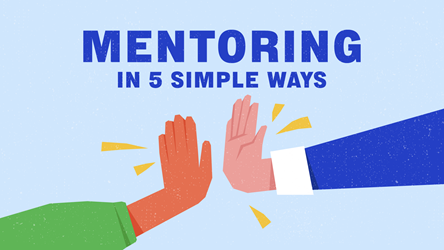Are You The Supervisor You Want To Work With? Five Ways To Be A Better Manager

4-minute read
Being a supervisor is a fine balancing act.
You are expected to be the leader your team trusts and the employee your bosses rely on. Sandwiched between the two, you have to manage personalities, meet expectations, and deliver results.
Amid these pressures, it is easy to slip into behaviours that slowly wear your team down—without meaning to. No one sets out to be a toxic supervisor, but even well-intentioned leaders can create stress if they’re not self-aware.
With small shifts in mindset and behaviour, you can lead with impact and empathy. Here are five practical ways to be a healthier, more empowering supervisor.
#1 Lead, not micromanage
Do you feel the need to know every detail of your team’s projects? Micromanagement may feel necessary at times, especially during a high-stakes project or when employees underperform. But research shows that long-term micromanagement leads to low employee morale, high staff turnover, and reduction of productivity.
Instead, try these:
Focus on outcomes: Instead of hovering over the process, set clear expectations on what needs to be done and by when.
Don’t fix it yourself: Teach your team to grow their skills. Use coaching questions such as “What are the solutions you are thinking of?” instead of giving direct instructions for problem-solving.
Set regular checkpoints: Schedule regular, well spaced-out checkpoints for updates to not suffocate your team.
Not everyone has the same working style as you. As long as goals are met, it is a win!

#2 Give credit to your team members
Even if you led the effort, failing to acknowledge individual contributions damages morale, erodes trust, and impacts employee engagement.
To do it well:
Give specific praise: Instead of stopping at “Good job”, try “Thanks for spotting the potential issue early. That saves the team rework.”
Share the limelight publicly: Publicly recognise individual efforts during meetings and presentations.
Reflect regularly: Make it a habit to ask yourself, “Who has helped make this possible?”, “Who has not been recognised?”

#3 Keep work within office hours
It is one thing to pull late nights during crunch time. But when long hours become the norm, it signals burnout in the making. Burnout is a common workplace problem in Singapore, such that a 2023 study shows 41% of Singaporeans leave their jobs because they want to improve work-life balance.
Create a more sustainable workplace by:
Leaving on time: In Asian culture, employees often do not leave till the boss does. Show that balance matters by leaving on time.
Sending work messages within working hours: If there is no great urgency, refrain from messaging outside of working hours. Or use scheduling tools to send them later.
Setting clear boundaries: If you need to work longer hours, make it clear that your team does not always have to be on standby. Let your team know, “I may have to work outside hours, but I don’t expect you to respond till the next working days.”

#4 Create clarity, not confusion
Vague goals, shifting priorities, changing goalposts, and inconsistent feedback often leave teams feeling lost and frustrated. Even worse, they become less efficient as time and energy are used on second-guessing.
Bring clarity to the team by:
Setting clear goals and success criteria: Not everyone has the same vision of what a “good outcome” is. Define what success means for each project, such as deadlines and stakeholder satisfaction.
Clarifying roles: Prevent overlapping responsibilities. Help your team members understand their specific roles and give them ownership.
Making progress visible: Use shared checklists or dashboards to help the team track progress at a glance
#5 Model the culture you want to build
Managers set the tone at the workplace. If you want a respectful, resilient, high-performing team, you would need to reflect those values.
Start with:
Listening actively: Make space for feedback, questions, and diverse perspectives from your team.
Giving constructive feedback: Focus on helping your team members grow. When projects went sideways, what are the learning points and what can be done better the next time?
Empowering your team: Delegate with trust and look out for opportunities for them to learn, stretch and shine.
People do not really leave bad jobs; they leave bad bosses. Be the supervisor you would want to work for; your team will thank you for it.
- POSTED ON
Nov 6, 2025








